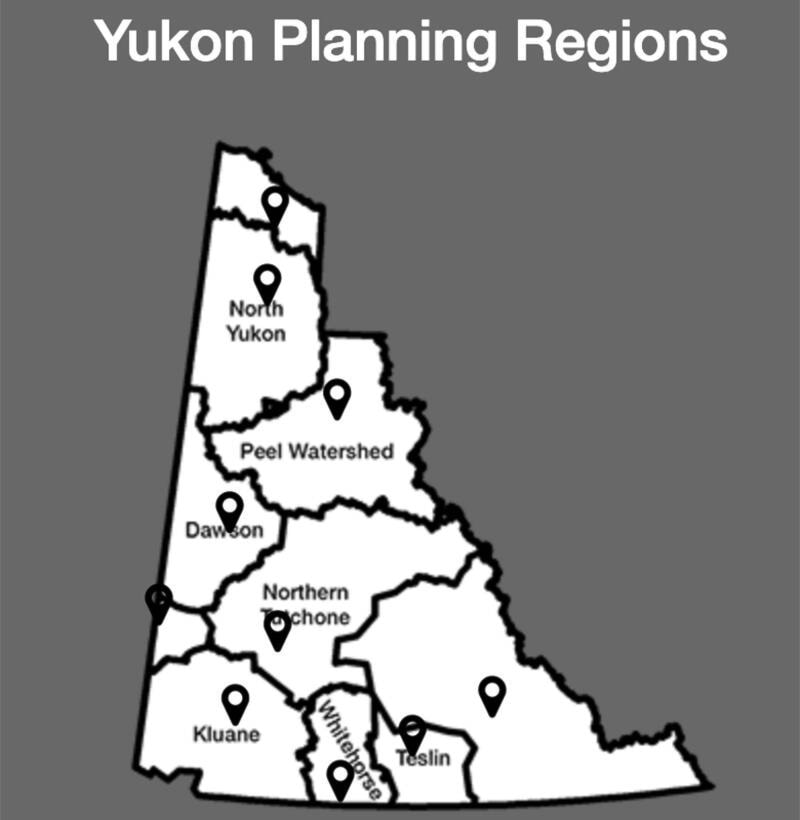First Nations embraced the concept of land relationship planning at a two-day session hosted by the Yukon Land Use Planning Council last week. The planners had originally hoped that the gathering could happen on the land, and around a fire. COVID-19 required that it be held online.
The organizers used Google-meet to connect First Nation members and elders from all the Yukon First Nations. Neighboring people from Tetlit Gwitch’in and the Taku River Tlingit from Atlin also joined to listen, share and learn about what the different nations are thinking and doing around Indigenous land planning.
Indigenous lens
The gathering was designed to coalesce around paths forward.
“What we’ve seen in the past, is where traditional knowledge is placed in a side text-block,” said Tess McLeod, the First Nation member of the three-person Yukon Land Use Planning Council.
This past practice of isolating traditional knowledge from scientific knowledge was described further in a research paper prepared for the gathering by Gillian McKee who presented her findings at the gathering.
“Within a western scientific planning paradigm, the task has been how to ‘insert’ traditional knowledge into the structure, much like trying to insert a square peg in a round hole,” McKee said.
Traditional knowledge is not just an add-on, but a key piece of the planning itself that feeds into policy decisions and carries on throughout planning and implementation. McLeod believes that what is needed is a means of “having traditional knowledge and Indigenous ways of knowing-and-being at the centre, within the planning process itself.”
The main challenge with having Indigenous knowledge within land planning is not with traditional knowledge itself, but with the planning process in how it respects and learns from traditional knowledge.
The gathering provided an opportunity to share the different approaches and facilitate conversations about what is taking place in different parts of the territory.
The first day was spent reflecting on what has happened so far in different planning processes: the Tr’ondëk Hwëch’in Land Stewardship Framework; How We Walk with the Land and Water (Kwanlin Dün, Carcross/Tagish, Ta’an Kwäch’än); and Planning in Taku River Tlingit Traditional Territory.
“A huge emphasis of the gathering was around the term ‘relationships,’” said McLeod. “So it’s not just our relationship to the land; but it’s also our relationship to each other; to government-to-government relationships; as well as Yukoners’ relationships to wildlife; and relationship to water; and all those kinds of things.”
Western thinking has separated things into plans for fish, and plans for caribou, and plans for trees, and for plans for mining claims — without thinking about the whole interaction of the many parts of the environment in which we live.
“It’s really trying to come from a different lens at the very beginning of the planning process,” McLeod said.
The second day of the gathering included small break-out sessions with digital “jam boards,” like whiteboards. McLeod credited a technical support group that helped people feel comfortable with the technology and many more people showed their faces on screen in the small groups. The record of these proceeding is being compiled and will be available at a later date.
McLeod said that it is important for people to see themselves in that plan at the end of the day. She stressed that this is especially important for youth “so that they take ownership and stewardship over [the plan] and its implementation.”
With human relations and government relations being included as important relationships in the land planning processes, new ways of thinking are necessary to re-frame western land planning models.
“I think there’s just a lot of hope and a lot inspiration that came from the gathering,” said McLeod.
Contact Lawrie Crawford at lawrie.crawford@yukon-news.com
